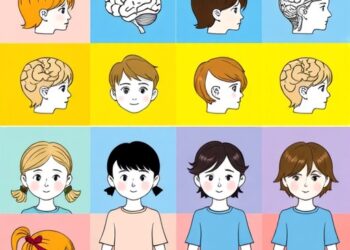In the 2021–2022 school year, schools banned books more often than ever before in United States history. Katie Spoon, Isabelle Langrock, and colleagues analyzed data from PEN America on 2,532 book bans that occurred during the year, in combination with county-level administrative data, book sales data, and a novel crowd-sourced dataset of author demographic information. The research team found that people of color are several times more likely to be the authors of banned books than White authors and that a considerable proportion of banned books, both fictional and historical, feature characters of color. About 37% of banned books were children’s books with diverse characters, including both LGBTQ+ characters and characters of color. A further 22% were non-fiction books about social movements and historical figures. In contrast, popularly discussed banned books such as young adult queer romance novels only made up a small proportion of banned books. In addition, the authors found that on average banned books do not tend to be particularly popular before bans; nor do bans tend to increase sales by drawing attention to specific contested titles. The authors also found that the counties most likely to ban books are right-leaning counties that have become less conservative over time than neighboring counties, suggesting that book banning is a largely symbolic tactic to galvanize conservative voters in increasingly competitive electoral districts. According to the authors, contemporary book bans are best understood as a form of political action in contested local contexts.
In the 2021–2022 school year, schools banned books more often than ever before in United States history. Katie Spoon, Isabelle Langrock, and colleagues analyzed data from PEN America on 2,532 book bans that occurred during the year, in combination with county-level administrative data, book sales data, and a novel crowd-sourced dataset of author demographic information. The research team found that people of color are several times more likely to be the authors of banned books than White authors and that a considerable proportion of banned books, both fictional and historical, feature characters of color. About 37% of banned books were children’s books with diverse characters, including both LGBTQ+ characters and characters of color. A further 22% were non-fiction books about social movements and historical figures. In contrast, popularly discussed banned books such as young adult queer romance novels only made up a small proportion of banned books. In addition, the authors found that on average banned books do not tend to be particularly popular before bans; nor do bans tend to increase sales by drawing attention to specific contested titles. The authors also found that the counties most likely to ban books are right-leaning counties that have become less conservative over time than neighboring counties, suggesting that book banning is a largely symbolic tactic to galvanize conservative voters in increasingly competitive electoral districts. According to the authors, contemporary book bans are best understood as a form of political action in contested local contexts.
Journal
PNAS Nexus
Article Title
Book bans in political context: Evidence from US schools
Article Publication Date
11-Jun-2024




